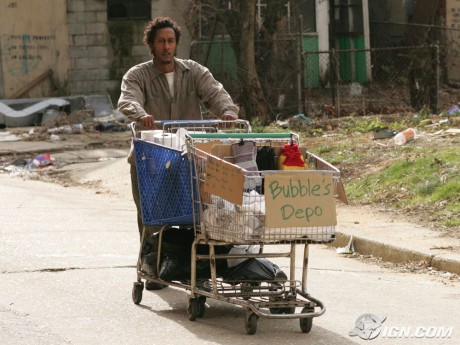Let People Use Food Stamps Online Already!
This isn’t hard

By the end of this Washington Post article about food stamps, food deserts, hunger, poverty, and how the Internet could solve an important problem if only it were allowed to, you too may find yourself screaming “Just do it!” at your screen like you’re in an old Nike commercial.
A simple change that could help solve one of the biggest problems facing poor people
Food stamps are a vital source of nutrition for an embarrassingly large number of Americans, and yet many of the people who rely on them when they go shopping also have a hard time even getting to the grocery store: because they live in a food desert and they can’t afford a car, say, and/or because they have to work multiple jobs to make something that approaches a living wage.
Because it’s not 1996 anymore, the technology exists to allow people to order groceries online and have them delivered. FreshDirect exists. Kroger exists. Peapod exists. Since more folks who rely on SNAP have internet connections than cars, the solution to this problem exists too. Can bureaucrats get it together to connect input to output?
Survey says: Maybe! Sorta!
Kroger spokesman Keith Dailey said in an email that the company is “watching the conversation closely,” but doesn’t have any plans to accept food stamps online. Peapod would support a USDA move to allow food stamps to be used online, said Peg Merzbacher, regional marketing vice president. Walmart and Instacart did not reply to a request for comment. … It would take widespread involvement of the biggest players to make a true difference.
There are some bright spots, at least, in this dispiriting bureaucratic fog:
Thrive Market, an online store focused on healthy food and organic products, has been leading a coalition of health food companies pushing to make it possible for food stamp families nationwide to use their EBT cards online. After the USDA dragged its feet on launching a trial, Thrive launched an online campaign late last month to speed up the pilot program, with partners like Clif Bar & Company, the Hispanic Federation and celebrity fitness trainer Jillian Michaels. …
Grocery delivery services are increasingly a normal channel. Already, Lovelace said, some of his low-income customershave to discontinue their service because they can’t use food stamps on the site.
“We don’t want to leave people behind just because they’re poor,” said Bolen, the senior policy analyst with the Center on Budget and Policy Priorities.
Some states like Alabama and South Carolina further complicate matters by levying taxes on groceries. (Click through to enjoy an in-depth piece on Forbes, inspired by National Ice Cream Day, about our wacky, unaccountable, and on occasion “incredibly specific” system of state-by-state taxation. For instance, did you know that, in some places, “all it takes is leaving the premises or adding a topping to make something go from nontaxable to taxable”?) Grocery taxes can keep people from getting the food they need.
What would it take for Kroger and Walmart to agree to take this simple yet potentially life-saving step? Maybe if we make enough noise, we’ll find out. Because seriously, modernity has some drawbacks, but the way the Internet can make life easier is one of the 21st century’s clear advantages. Please let the web do its job and help hungry people get food.
Support The Billfold
The Billfold continues to exist thanks to support from our readers. Help us continue to do our work by making a monthly pledge on Patreon or a one-time-only contribution through PayPal.
Comments